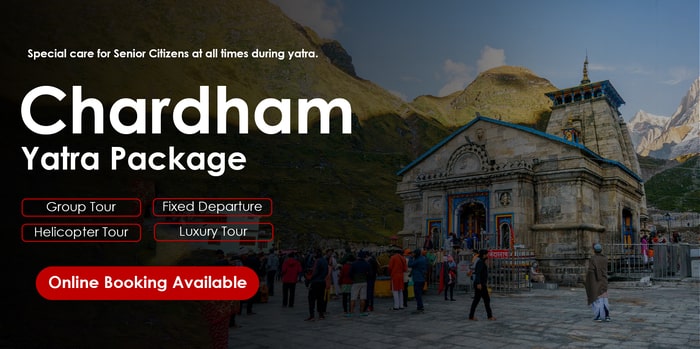Last Updated on January 18, 2025
Originating at Chorabari Glacier near the ancient temple of Kedarnath, which houses the Jyotirlinga, the Mandakini River is a tributary of the Alaknanda River. Literally translating to “the calm” or “the unhurried one,” the river flows gracefully past the temple before merging with the Alaknanda River at Rudraprayag, a holy Panch Prayag location. The river accompanies you along NH 107, offering a scenic driving experience through the hills. The Alaknanda River then continues towards Devprayag, where it meets the Bhagirathi, forming the holiest river in India, the Ganga. Used by locals in many ways and supporting an ecosystem, the river is worshipped wherever it flows.

Religious Importance
This transcendental or otherworldly river is mentioned in the holy Hindu religious text, Srimad Bhagavatam, which traces its origin to ancient times. In a more recent source, John Leyden’s 1810 work on the Malay Annals mentions that the Sultan of Malacca, Parmeswar, used to carry a sword called Chora sa Mandakini as a significant part of his royal regalia. This sword is believed to have originated in India and is dated to be 800 to 1,000 years old.
Mention in Ramayana
In the Ramayana, Lord Ram describes the beauty of the Mandakini River and its multi-colored scenic beaches, exotic birds like geese and swans, and deer adorned with flowery trees on its banks. He also describes several sages taking a holy dip in its waters, along with herds of monkeys, elephants, and other animals who come to the river to quench their thirst. This suggests that Ram and Sita spent memorable moments here, enjoying the vistas of Chitrakuta Mountain. The Mandakini River’s beauty has long attracted nature lovers and peace seekers.
About Chorabari Glacier
Situated near the holy site of Kedarnath in the Garhwal region, Chorabari Glacier is also known as Bamak Glacier. Spread over a distance of 15 sq. km and 7 kilometers in length, this glacier has always been a prime attraction for outdoor adventure enthusiasts and mountaineers. The glacier contains two snouts that form the main source of the Mandakini River and the famous high-altitude lake, Chorabari Tal. The trek to the glacier is of an easy gradient. Trekkers must start their journey from Sonprayag, which serves as the base camp for this stunning glacier. Upon reaching the summit, visitors are treated to some of the most glorious and untouched Himalayan landscapes. The glacier can also be seen on the way to the Kedarnath temple, as it is not far from this sacred site. This journey offers a once-in-a-lifetime opportunity to witness some of the most incredible and pristine landscapes.
Damage to Chorabari Lake
Chorabari Lake is approximately 400 meters long and 200 meters wide, situated about 2 kilometers upstream from the holy town of Kedarnath. In 2013, a devastating torrential rain damaged a major portion of the Chorabari Glacier, which caused the lake’s boundaries to open completely. The displaced lake water flowed down to the temple, resulting in widespread destruction of villages in its path. This natural disaster acted as a wake-up call, highlighting the urgent need for environmental conservation and addressing climate change.
About Confluence of Mandakini
The place where the holy Mandakini River merges with the Alaknanda River is named Rudraprayag, after Lord Shiva. Located 34 km from Srinagar, the entire region has a monumental history and is a significant place of worship and spirituality in India. Blessed with bountiful natural beauty and replete with ancient temples, Rudraprayag is a beautiful destination to visit, even for those who are not religious. The confluence of the rivers remains crowded with devotees year-round, who come to take a holy dip and cleanse themselves of their sins. Other important temples in Rudraprayag include the Jagdamba Temple and the Shiva Temple.
Best Time to Visit Mandakini River
The summer months of April to June are the best and safest time to visit the Mandakini River, as the river flows calmly during this period. This is also the season for the Char Dham Yatra and the Panch Prayag Yatra. Visitors are advised to avoid the monsoon months of late June to early August, when the river flow becomes more intense, and the currents are stronger, posing a danger to life.
Mandakini River Things to Do:
- White Water Rafting: The months of October to April are considered the best time for thrilling white water rafting. Due to the calm nature of the river, parts of it are also suitable for kayaking with rapids ranging from Class 3 to 5. Rafting activities are suspended during the monsoon months when the river swells with torrents.
- Winter Char Dham at Ukhimath: Ukhimath is one of the most popular spiritual destinations in Uttarakhand and is home to the Omkareshwar Temple, which serves as the winter abode for the idol of Baba Kedarnath. When the Kedarnath Temple shuts for winter, devotees can offer prayers to Baba Kedarnath here during the Winter Char Dham Yatra, which sees fewer crowds.
- Offbeat Peaceful Holiday at Khirsu: Khirsu, located at an altitude of around 1,700 meters, remains untouched by mass tourism. Surrounded by the Himalayas, it offers a peaceful retreat away from the crowds. From here, visitors can explore places like Kandoliya, Pauri Garhwal, and Ulka Ghari.




 Call
Call WhatsApp
WhatsApp Enquiry
Enquiry